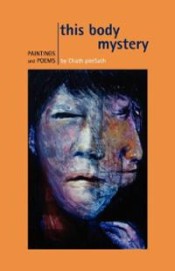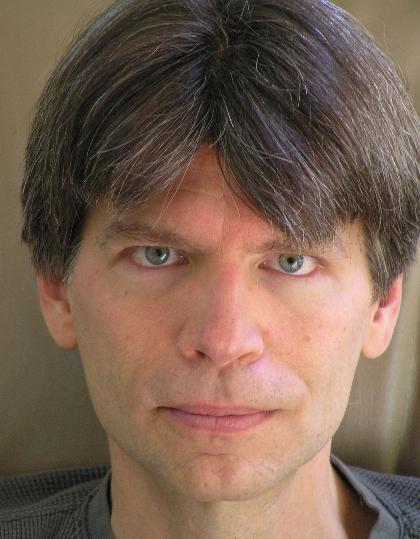
photo by Jane Kuntz
by Allan Vorda
The biography of Richard Powers almost reads like a book. Born in 1957 in Evanston, Illinois, Powers lived in Bangkok, Thailand from age eleven to sixteen while his father taught there. Upon the family’s return to the United States he majored in physics at the University of Illinois, but later switched to English, in which he subsequently received his B.A. and M.A. degrees. Powers then moved to Boston where he worked as a computer programmer; after publishing his first novel, he lived in the Netherlands and spent a year at Cambridge before returning to teach at the University of Illinois. His eleven novels to date include The Gold Bug Variations, which uses the double-helix as a metaphor for two separate romances; Galatea 2.2, a meditation on artificial intelligence; and The Echo Maker, the story of a young Nebraska man suffering from capgras syndrome, which won the National Book Award in 2006. Powers has received both a MacArthur Fellowship and a Lannan Literary Award, and recently became a Professor of Creative Writing at Stanford University.
Orfeo (W. W. Norton & Company, $26.95), Powers’s latest novel, offers a montage of time capsules from the life of Peter Els, a 70-year-old musician-composer who is on the run from the FBI in connection to bioterrorist activity. We see the people and events that have now brought him to national attention as he is dubbed the Bioterrorist Bach—apparently for putting his musical compositions into bacterium. As the title suggests, the story riffs on the Greek myth of Orpheus, the legendary musician who could enrapture the gods themselves, to produce an allegory of the possibilities of music and how it can shape and affect people’s lives. Throughout, Powers meditates on a litany of composers (from classical to contemporary) as well as historical events, creating a wonderful composition of its own in the process. Orfeo is a beautiful book from a writer who has the gift of literature at his fingertips; all we have to do is listen.
Allan Vorda: The title Orfeo is a reference to the Greek myth of Orpheus, a legendary musician who could charm all living things with his music. The myth recounts his playing music to soften the hearts of Hades and Persephone in order to let his dead wife Eurydice return to earth. How did you come up with the title Orfeo, especially since Peter Els’s music doesn’t always charm everyone, and he leaves his wife to pursue music?
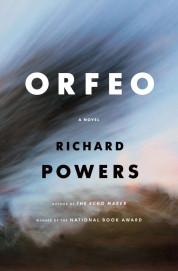 Richard Powers: The Orpheus legend is one of the oldest and most important stories in Western literature. Make that world literature. It’s a complex set of loosely linked stories, with Orpheus’s descent into the underworld being the best known and most important part of the legend. As far as I am aware, Orpheus is the only mortal who ever succeeded in beating death and persuading Hades to let one of his dead souls return to the world of the living. Orpheus’s mastery of music and his ability to make even stones weep with the beauty of his playing makes him a perfect metaphor for music’s mysterious ability to produce the profound human feelings from nothing but patterns of vibration. Reworkings of the legend pervade the arts, especially music, where everyone from Monteverdi (in the first ever opera) to Gluck to Offenbach to Stravinsky to songwriters like Andy Partridge and Nick Cave have taken a crack at it. In films, of course, there is the classic Black Orpheus and Cocteau’s Orphic Trilogy. I wanted to try my hand at a twist on that very long tradition and to indicate, in the title, that this book functions as an allegory even as it tells a realistic contemporary tale. Since my story is concerned with one man’s attempt to locate and reproduce the transcendent power of music, and since it also concerns a flight through the underworld of the contemporary culture of fear while attempting to resurrect a lost past, the legend was made to order. Nothing can compare to music in its power to raise the dead.
Richard Powers: The Orpheus legend is one of the oldest and most important stories in Western literature. Make that world literature. It’s a complex set of loosely linked stories, with Orpheus’s descent into the underworld being the best known and most important part of the legend. As far as I am aware, Orpheus is the only mortal who ever succeeded in beating death and persuading Hades to let one of his dead souls return to the world of the living. Orpheus’s mastery of music and his ability to make even stones weep with the beauty of his playing makes him a perfect metaphor for music’s mysterious ability to produce the profound human feelings from nothing but patterns of vibration. Reworkings of the legend pervade the arts, especially music, where everyone from Monteverdi (in the first ever opera) to Gluck to Offenbach to Stravinsky to songwriters like Andy Partridge and Nick Cave have taken a crack at it. In films, of course, there is the classic Black Orpheus and Cocteau’s Orphic Trilogy. I wanted to try my hand at a twist on that very long tradition and to indicate, in the title, that this book functions as an allegory even as it tells a realistic contemporary tale. Since my story is concerned with one man’s attempt to locate and reproduce the transcendent power of music, and since it also concerns a flight through the underworld of the contemporary culture of fear while attempting to resurrect a lost past, the legend was made to order. Nothing can compare to music in its power to raise the dead.
AV: Since you wrote your last novel, Generosity, you had teaching assignments in Germany and at Stanford University. Did these experiences contribute in any way with writing Orfeo? For example, your novel utilizes the Seige of Munster (Germany) as well as Peter’s visit to Dr. L’Heureux (writer and former Stanford professor).
RP: My fascination with the Siege of Münster dates back to a visit I made to that city in the early 1980s. When I saw the iron cages still attached to the steeple of the St. Lambert’s church, where the bodies of the leaders of the rebellion were kept after their deaths, a quaint centuries-old story suddenly came alive—one of the most incredible accounts of a group search for transcendence I’d ever heard. I used the event as an intertext in my novel Operation Wandering Soul, although it makes only a small cameo there. I always felt that the Münster Uprising would have made the greatest kind of contemporary opera, and since I was incapable of writing that opera myself, I had to get Peter Els to do it. The story is a kind of archetype for the millennial cult gone horribly wrong, a pattern that has recurred again and again over the centuries. Suffice it to say that Waco was far from being the last recap we’ll see. People long so badly for heaven on earth that we’re willing to go to hell to try to bring it off.
As for “Dr. L’Heureux” and the terrific Stanford novelist of the same name—well spotted! The use of the name is my Easter egg for a wonderful writer, who happened to supply me with the story on which Els’s malady and diagnosis are based. During that same visiting stint at Stanford (where I now hold a permanent position), I had the extraordinary opportunity to work as an assistant in the lab of biochemist Aaron Straight. My weeks doing bench work on a large-scale genetic screen gave me a chance to see the field from within and helped me imagine my way into Peter Els’s second career as a would-be DIY molecular engineer.
AV: You have used places where you have lived, especially Illinois, for settings in your novels. One place you haven’t mentioned very much is Thailand where you lived from age eleven to seventeen (1968-73). What was it like growing up there as an adolescent, did anyone you know claim to have seen a (pi) ghost, and do you foresee writing a novel set in Thailand?
RP: In fact, there are similar small references to my experience growing up in Bangkok scattered here and there throughout most of the other novels. But the fourth of those books, Operation Wandering Soul, treats those experiences in depth, and one of my strongest memories of my years growing up there forms the foundation for the dramatic centerpiece of the childhood of Richard Kraft.
I moved to Bangkok when I was eleven and returned when I was sixteen. I left the north shore suburbs of Chicago and returned to the northern Illinois cornfields of DeKalb. In between, I lived another life altogether, one that would have been unimaginable to me without living through it. And when I came back to the States, I never again entirely fit in to life as lived here. Those years in Southeast Asia made me a permanent outsider, an observer in my own life. They started me in an itinerant life that has led me through many countries and lots of temporary addresses. It’s pretty safe to say that that early dislocation and relocation to the other side of the world was the first step in my becoming a writer.
AV: Intersections: Essays on Richard Powers (Dalkey Archive Press, 2008, edited by Stephen J. Burn and Peter Dempsey) states “Powers has consistently constructed his books around interlocking narrative frames, splitting his novels into two or more story-lines. Rather than advancing toward some melodramatic convergence, these parallel lines typically uncover resonant symmetries in apparently dissimilar situations.” In what ways do you agree or disagree with this statement?
RP: The Burn and Dempsey collection is filled with wonderful things, and I am deeply appreciative of the insights it contains. I do think it correctly identifies my interest in creating parallax and triangulations of plot using multiple narrative frames. But I think the way that my books deploy multiple narrative frames has been so different over the eleven novels that such a stripped-down description threatens to become a little misleading. The qualitatively distinct frames of Three Farmers, for instance, share almost nothing with the temporal shuttling between different moments of Peter Els’s life in Orfeo, now appearing twenty-nine years later. There is a big difference in alternating between adjacent frames of equal importance (such as in Gain) and creating a kind of nested-Russian doll structure (as in Prisoner’s Dilemma). I have seen reviewers and critics desperately trying to shoehorn the formal and structural devices of Galatea or Time of Our Singing into that formula, thereby missing as much of those books’ structure as they succeeded in capturing, using the simple generalization.
AV: One of your early influences was Thomas Pynchon’s Gravity’s Rainbow, which you first read at age sixteen and which you have “re-read portions of . . . every year.” What is it about Pynchon that you admire since your writing styles are dissimilar?
RP: More things than I can name. One of the many pleasures of Pynchon is that he doesn’t have a single style, but manages to create a whole panharmonicon of voices and styles and tones and moods and registers, borrowing from high and low, sublime and ridiculous, combining the entire spectrum of what prose can do into a symphonic whole. I can’t pretend to do even a fraction of what he manages, but he has inspired me to open up my own stops and try to vary my own style as much as possible, depending on the needs and purposes of any given scene. Pynchon is also the master of casting the reach of fiction far beyond the concerns of the merely personal and domestic, out into the vast world of human concerns, professions, researches, and industries. I learned from him that the sciences and math and engineering are actually the stuff of human passion and obsession, and that the erotics of knowledge can make for a story every bit as mystifying and thrilling as the old questions of who’s up and who’s down, who’s in and who’s out, and who gets to marry whom.
AV: Orfeo, your eleventh novel, is the journey of Peter Els and his life-long obsession with music. It has been documented that your family would gather around an organ for sing-alongs, and that you and your four siblings “all sang and played instruments.” What was your musical background like as a child, and who were your favorite composers or musicians?
RP: First above all, Bach. I loved him passionately from the earliest age. I had an old, scratchy set of the Brandenburgs that my choir director gave me, and I would listen to them again and again every night, sometimes all six of them at one go, before falling asleep. It made my brothers and sisters nuts. (This is the experience that forms the basis for young Peter Els’s transcendent early bliss, listening to Mozart’s Jupiter.)
The rest of music opened up to me out of that deep spring of Bach’s endless invention. Interestingly, I had a real affinity for thorny, twentieth-century music while I was still in my early teens, and I had to circle back to the Romantics and the warhorses of the nineteenth century when I was a bit older. And most embarrassing of all, it took me until well into adulthood before Beethoven opened up to me and I could hear him as the heart-crushing, restless revolutionary that he is. Late in life, I came to love early music, especially Renaissance vocal polyphony. A couple of years ago, I felt a period of sadness, thinking there was no more of Western concert music left for me to discover and thrill to. The beauty of writing Orfeo was that I could spend my days returning to the amazements of the music of my own lifetime, and to hear much of it for the first time.
AV: Orfeo chronicles the life of Peter Els from a child to age seventy, but the story is told in snapshots at various times in his life. One of the most important early life-changing events is when he meets Clara Reston. Els gives up a possible career in chemistry after Clara introduces him to Mahler’s Kindertotenlieder: “the song began its chromatic wanderings, and Peter Els never heard music the same way again.” It’s ironic that Clara makes him fall in love with her and music, but then leaves him, yet Els has now become addicted to the possibilities of music and his life will never be the same. Can you comment on how choices early in life can totally change the direction one takes? I believe you had your own career change as an undergraduate at the University of Illinois when you switched majors from physics to English Rhetoric.
RP: Oh, gee. Where to start on this one? Our beginnings never know our ends. There was a Clara in my life, who I commemorate in this fictional girl. People leave, you find them again decades later, and you discover that the influence that you thought had ended long ago goes on forever, a stranger thing, different, and luckier than you could have supposed. I always thought I would be a scientist. Then I was sure I would become a poet. Then I programmed computers for a living, thinking that it was simply a way to keep a roof over my head, never dreaming that, far from delaying my growth as a novelist, that experience would one day supply the bread and butter of three of my novels’ plots. And then there is that closet full of songs and musical compositions that I have accumulated over the decades. If you had told me, when I was young, that I would one day, in my fifties, work in a biochemistry laboratory, in preparation for writing a book about a composer who trained in chemistry and who becomes, in his seventies, a DIY genetic engineer, I’d have said, Tell me another one.
AV: The major relationships in Peter’s life include his wife Maddy Corr and his friend, Richard Bonner. Of the two it is Bonner who exerts the most influence, though it is not always positive. It probably is too much of a stretch to liken the Els-Bonner relationship to the Humbert-Quilty doppelganger, but how did the character of Bonner evolve, since he is so different from any character you have created?
RP: Well, where do any of these troops and troops of people come from? Bonner has his precursors, both in my work (I’m thinking of Eddie Sr. in Prisoner’s Dilemma and Philip Lentz in Galatea) and in my life. We find, in the memories of the big personalities that change us, the extremes hiding in our own temperaments. But all my characters—the principals, in any case—are composites of many lives and much aimless imagining.
AV: Wagner, Mozart, and Mahler influenced Peter in various ways. Did you have experiences similar to Peter’s when you first heard Mahler’s Fifth Symphony? It’s amazing that Mahler could create such great music and then enter into a disastrous marriage, which seems to have greatly stifled his creativity.
RP: I was eighteen when I first heard Mahler’s Fifth. “Clara” hated it; I thought it was the bee’s knees. She later did a one-eighty, completely forgetting about her antipathy, and claiming that she’d always adored the piece. So it goes, with the gap between our experiencing and remembering selves.
Mahler, too, has been making cameos in my novels for a long time. But for me, it’s the song cycles first and the symphonies second, as far as the force of their influence.
AV: Peter’s love of the old classical composers gives way after being influenced by teachers such as Karol Kopacz and Matthew Mattison. Peter then turns to minimalist composers like John Cage, Philip Glass, Steve Reich, and Harry Partch. Do you have any special affinity for these minimalist composers, in particular, for Partch who led a very strange life and composed some very strange music?
RP: I do have a little trouble with the label “minimalist.” It runs the risk of obscuring more than it reveals. And I certainly wouldn’t use it in reference to Cage or Partch, who were each up to very different things than the cycling, strobing, phase-shifting preoccupations that sometimes characterize Glass and Reich. My fascination with Partch dates back to my undergraduate days at the University of Illinois (where I have Peter Els go to graduate school). Partch had been in residence there, not too many years before I arrived, and one could still feel his ghostly presence. I think his whole menagerie of invented instruments played in my imagination as much as his microtonal subdividing of the octave into dozens of intervals.
But what these four composers do have in common—and what thrilled me about them and made me want to use them to inspire Peter Els—is their insistence that the language of music can be extended into whole new places. Strange places? What isn’t strange, heard for the first time? All four of these composers were preoccupied with sonority, with the sound of sound itself. All four of them asked people to listen again to what they thought was noisy or banal or trivial, and to hear it as beautiful and new.
AV: You also devote attention to Olivier Messiaen and his Quartet for the End of Time, first played in a Nazi concentration camp in 1941. When did you first encounter Messiaen and why did you choose to incorporate it into Orfeo?
RP: The Quartet is one of those few avant-garde pieces that have entered into the canon of commonly performed concert music. I first heard it in the mid 1970s, performed by the very hip “supergroup,” Tashi, who had formed for the express purpose of performing the Messiaen! I had to include it in the book because it is such an otherworldly thing, and the story of its creation is one of the most dramatic stories of 20th-century music. As much as any other piece, it shows the capacity of the human creative spirit and reveals how making music can be a matter of life and death.
AV: You also refer to Steve Reich’s Proverb, which utilizes Wittgenstein’s proverb “How small a thought it takes to fill a whole life.” Reich was a philosophy major at Cornell and studied Wittgenstein. I interviewed him a long time ago and asked him what he thought about contemporary musicians. He said: “When I was fourteen years old there was rock and roll—Fats Domino and Bill Haley—but frankly I thought it was stupid. I didn’t like rock and roll. I was a snob and still am.” This sounds a lot like Peter, who was forced to listen to rock and roll by his brother Paul. Is Reich’s comment something with which you can identify and did you have any similar experiences?
RP: Reich’s comment made me laugh! I, too, was a musical snob as a kid, and I still am, I guess. Only it doesn’t feel like snobbery; it just feels like a flavor of deep and different joy. I didn’t hate rock and roll; I loved lots of it. I absolutely worshipped the Beatles and every band that succeeded in sounding the least bit like them. But a good song was a burst of adrenaline. Even the most interesting of them rarely survived repeated listening. I wanted a kind of music that could concentrate me, that could teach me how to concentrate. Music that would keep getting richer and deeper, the more I listened.
It’s funny, that accusation of musical snobbery that lovers of “classical” music have to suffer. Rock is always considered the rebellion—the cutting loose from the staid, stiff conventions of concert music. But the reality was, when I was growing up—and this is ten times truer now—popular music was the triumphant, hegemonic, staid, conventional form, and it took a fair amount of courage and rebellion for a kid to hear the wildness in “serious” music.
For me, the real difference isn’t between high music and low, adventuresome versus conventional, exciting versus dry. The big difference is between music that employs a high degree of repetition and music that depends on change and development. The first kind of music can pop up on your car radio and you can love it before you get to the end of the first chorus. The second, you have to live with for a while, before you can hear where it wants you to go. But for that, you need time and attention and effort, resources that are deeply endangered, in the era when all music is available to anyone from anywhere all the time.
AV: Another major change in Peter’s life is when he chooses music over his family of Maddy and Sara: “For nothing, for music, for a chance to make a little noise in this world. A noise that no one needed to hear.” Later on, Peter tells Clara that “it’s all your fault,” but that he felt it was “as good a life as any.” Then, after Peter sees Maddy in St. Louis, he tells her: “I never should have left you and Sara for music. Even to change the world.” It seems Peter vacillates on whether he has made the right decision, but do you agree that Peter’s choice of music was neither right nor wrong?
RP: Right or wrong? I’m not sure it’s a question of morality. It’s a question of trying to know with precision what it is that we’re really after in life and to predict accurately how best to get it. And we are all notoriously bad at that. I think Peter is filled with all kinds of feelings about his choices by the end of his life—as many feelings as he has tried to locate and capture in the mystery of music: horror, shame, pride, perseverance, regret, recommitment. Do I judge him? Naw. I love the guy. I’ve been there.
AV: For all of Peter’s efforts to create music, he is troubled by the loss of his relationship with his daughter Sara, thinking “he’ll never make anything to compare to her for pure wonder” and that Sara is “my only decent composition.” It’s ironic that Peter compares his daughter to a composition, but ends up making music that isn’t always satisfying.
RP: More than that: he’s forced to admit that this “composition” came about largely in his absence, and that whoever his daughter is, she is only his doing to a very small degree. And yet: he feels, for her, a pride that nothing else he has ever made can give him. I never had any children but my books. Regret? Sometimes. But then I start to think of the next book, the perfect one that I might still write . . .
AV: Peter’s life-altering decisions are wonderfully exhibited later in the novel when Peter, who is on the run from the authorities, stops at a café and sees “a bat, hunting by echo-map, flying in paths so skittish they seem random” and then hearing Reich’s Proverb “electrifies Els: one simple veer that changes everything.” What was the inspiration for this scene?
RP: I honestly don’t know. I seem to have dragged that up from some dream world. I set the scene in a favorite café that I frequented when I was an undergraduate and still filled with the excitement of discovering new music. But I gave the scene that soundtrack from Reich, a piece I didn’t discover until I was well underway writing the book!
AV: In the fall of 2009 at the age of sixty-eight, Peter has an epiphany while walking his dog Fidelio. It is based on his love of music over everything else (“Music to abandon a wife and child by”) when he hears on the radio soundtracks extracted from DNA: “But the real art would be to reverse the process, to inscribe a piece for safekeeping into the genetic material of a bacterium.” Is this possible? How did you come up with this idea, which eventually turns a gentle composer into the fugitive Bioterrorist Bach?
RP: It is indeed possible, and shortly after I submitted the manuscript to my publishers for final production, I read a news article announcing that scientists had succeeded in doing it. A little bit of googling will turn up the account. There are many more similar stories on their way into the world, I am sure.
The first use of a similar technique that I know about was by the bioartist Eduardo Kac. Way back in 1999, he encoded the line from Genesis, “Let man have dominion over the fish in the sea, and over the fowl of the air, and over every living thing that moves upon the Earth,” and inserted it into a bacterium.
But the idea of telling a story about an artist whose work would alert the authorities in Patriot Act America came from the arrest of the bio-artist Steve Kurtz, back in 2004. Kurtz’s work using genetically modified organisms appeared in museums all over the country. Nevertheless, it was four years before the government accepted the obvious and dropped charges against him.
AV: There are several references to God throughout Orfeo. There is the epigram that states: “But I was like a kid who confuses his grandfather with God” and Partch’s comment to “bless the giver. And she shall be multiply blessed . . .” Sara says to Peter: “I thought you were God.” Partch’s comments are his own and I can understand Sara’s comment, but the one that bothers me is when Jen, Peter’s much younger platonic-girlfriend-student, asks what he thinks about a piece of music she has just played. Peter’s response: I have two words for you, he intones. And one of them is Holy. . .” Assuming this means the Holy Ghost, why would Peter make this statement when he apparently gave up religion as a young man when he was seeing Clara: “She only had to smile at his churchgoing, and from one Sunday to the next, he quit his family’s faith.”
RP: Well, the second word he has in mind isn’t “Ghost,” but something much more scatological! He is happily astonished by his student’s composition, and he is praising her as playfully as he can. So I suppose that renders a bit of your question moot. But it’s true: the quest for a transcendent music is, throughout the book, shown to have religious overtones. The link between religious and musical awe is a strong one, as evidenced by the fact that half the greatest music in the world is religious. Peter is after a kind of atheist’s salvation through art.
AV: Peter’s picaresque journey ends when he meets Sara in California to patch up their relationship. This reconciliation occurs just before he runs outside holding a “bud vial high, like a conductor readying his baton to cue something luckier than anyone supposes. Downbeat of a little infinity. And at last you will hear how this piece goes.” Essentially, Peter was an innocent man whose guilt and fate were fabricated by the legal authorities and the media; his only real guilt was his self-inflicted psychological guilt from hurting the ones he loved. One can only think that Peter deserves a better coda.
RP: I would like to think that this is a complex, rich, somewhat mysterious ending. But I feel pretty certain that I would only diminish it by spelling out my own interpretation of it. I have no doubt that people will hear that piece in lots of different ways. That, too, is the beauty of art: you can’t control what people will think of or do with it.
AV: Can you briefly discuss what your next novel will be about, and if there are any plans for your books to be made into movies? I would think that Generosity and The Echo Maker would be interesting to see on film.
RP: I have become obsessed with trees, a massive part of the world and of human history that has been almost invisible to me until now. Seeing trees, and starting a story about them, has changed the way I see everything. I am savoring the idea of spending the next several years in their company.
AV: As they say in Thailand, Khob khun krab!
RP: Allan—Mai pen rai krab! And thank you, for the chance to do as expansive an interview as I’ve done in a while.
Click here to purchase this book at your local independent bookstore

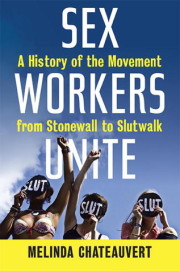 A History of the Movement from Stonewall to Slutwalk
A History of the Movement from Stonewall to Slutwalk

 A Memoir of Heart Disease
A Memoir of Heart Disease
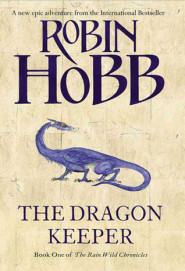

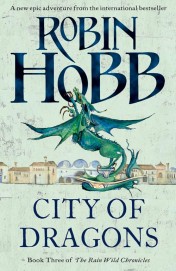
 Carolyn Zaikowski
Carolyn Zaikowski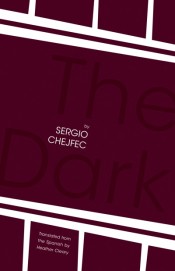 Sergio Chejfec
Sergio Chejfec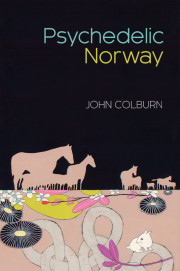

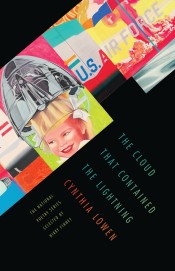 Cynthia Lowen
Cynthia Lowen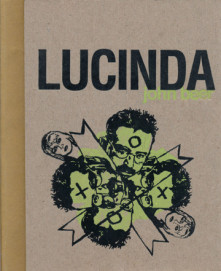 John Beer
John Beer


